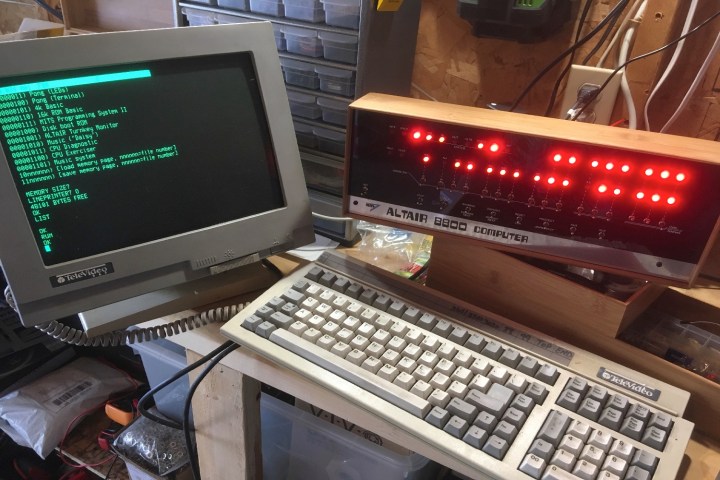
You can forget about the IBM Personal Computer and drop all the pretense about the 1984 Apple Macintosh. When it comes to which personal computer is the most influential of all time, there can only be one correct choice: The MITS Altair 8800. Why was this decades-old mail-order computer so important? Because its appearance on the front cover of the January 1975 edition of Popular Electronics magazine pretty much inspired everyone who helped to launch the personal computer as a mass-market product category.
More than 40 years later, the actual tech which powered the Altair is, unsurprisingly, massively outdated — but that has not stopped Altair disciple Chris Davis from creating a working, Arduino-powered replica kit that you can order for $149. Even without taking inflation into account, that is a whole lot cheaper than the $439 that a kit form Altair would have set you back in the mid-1970s. Or the thousands that a real original model would cost you today.
“I’ve always been fascinated by the Altair 8800 and early computer history in general,” Davis told Digital Trends. “I was much too young to build — much less afford — an Altair in 1975, since I was only nine years old. But the desire to build and play with an Altair never left me.”

Davis said he was inspired when he saw a post on Hackster.io by David Hansel about an Altair emulator Hansel had written for the Arduino Due. “His instructions were good, but still made for a challenging project,” Davis continued. “Once I had built two Altair emulators, I wanted to make a kit that my two sons, ages 12 and 14, could build, so I set out to simplify the process. I also had some interest from other guys in my spare circuit boards. That’s when I had the idea to market a kit. I wrote to David and asked his permission, which he gave.”
Unlike the original Altair 8800, the kit not only emulates its operation but also contains a good amount of built-in software. That is useful because, as Davis points out, it means you can show it off to your geeky buddies without having to first toggle in a program byte by painstaking byte.
For today’s generation, the idea of controlling a computer by flipping switches instead of clicking a mouse or swiping a screen may seem strange. But if you want to be transported back to a simpler time in computing, this is a great project that should keep you busy for a few weekends.


